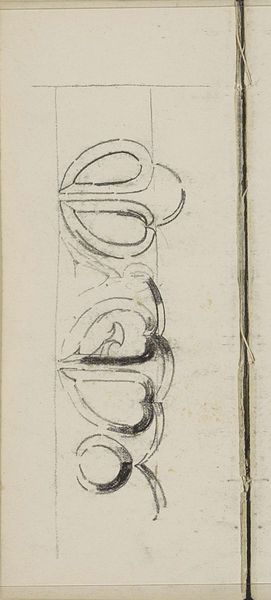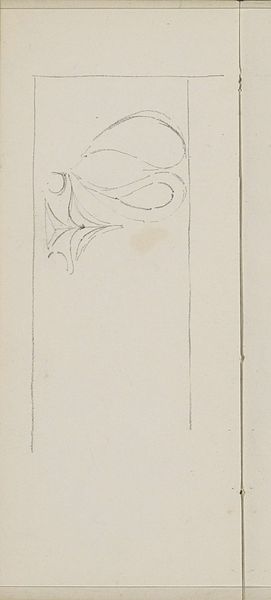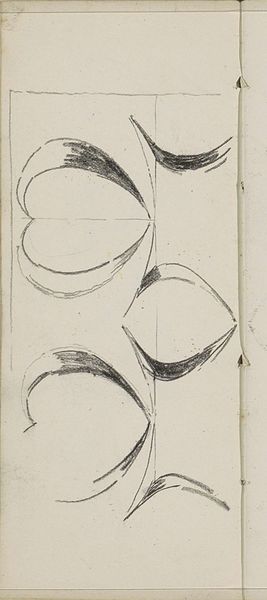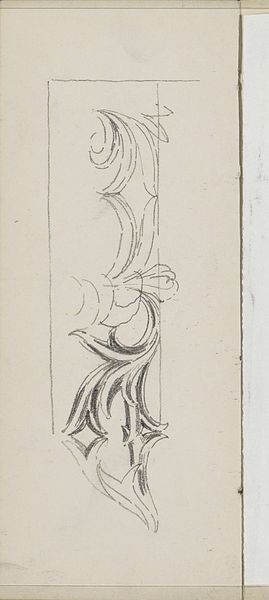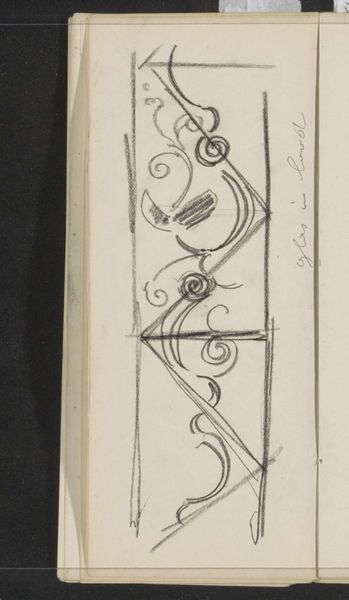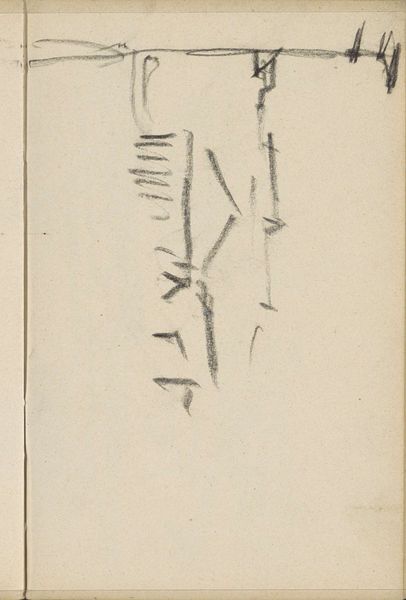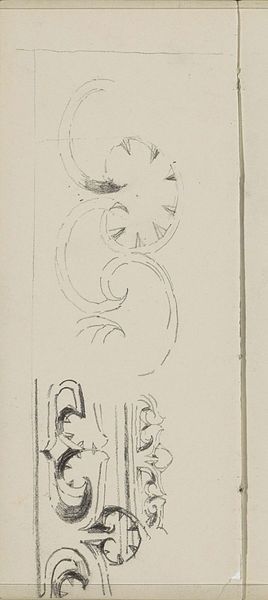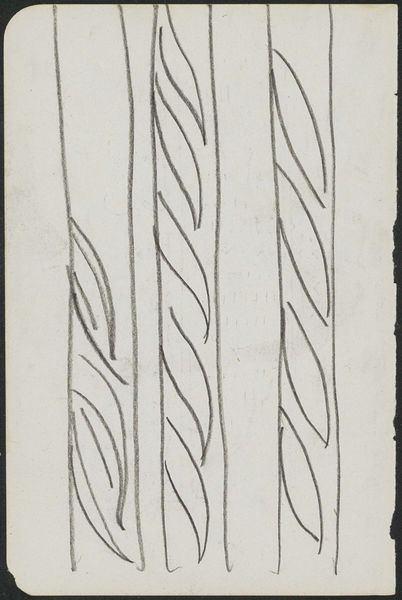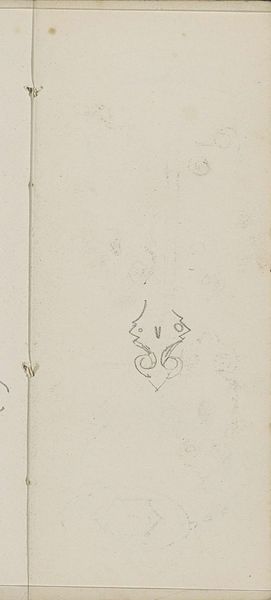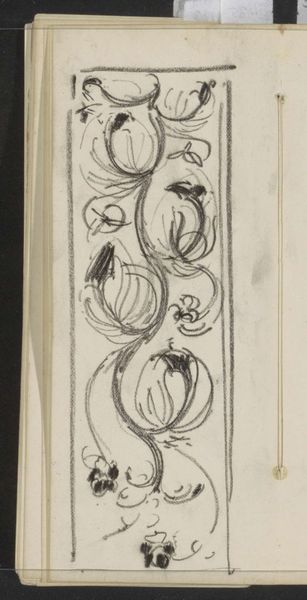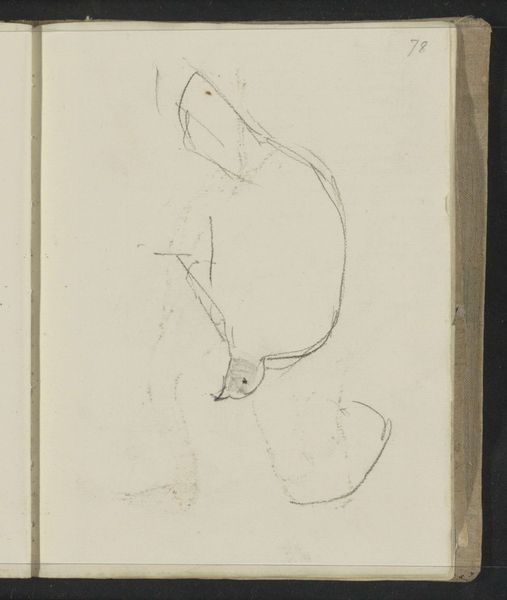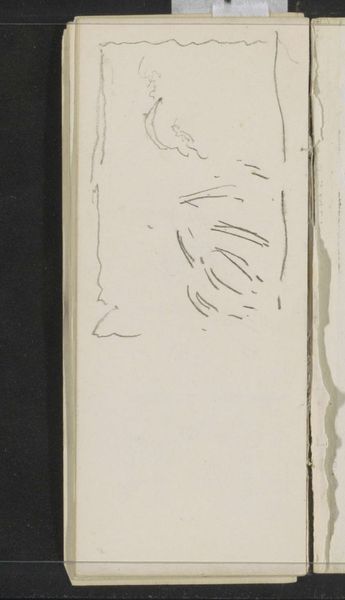
drawing, ornament, paper, pencil
#
drawing
#
ornament
#
art-nouveau
#
paper
#
geometric
#
pencil
#
abstraction
#
line
#
decorative-art
Copyright: Rijks Museum: Open Domain
Curator: These ornaments really capture a sense of nascent energy, wouldn’t you say? The circular compositions almost pulse with a quiet force. Editor: They feel incredibly elemental. The minimal shading amplifies this sense— almost primal in their simple repetition. The pencil sketches titled "Ornamenten met bloemknoppen," were conceived by Gerrit Willem Dijsselhof sometime between 1876 and 1924. It is held at the Rijksmuseum. Curator: Dijsselhof was working within a very specific socio-political moment, as he was rethinking ornament away from rigid traditions in favour of a modern expression tied to the emergence of new national identities. We often situate Art Nouveau within frameworks of power and colonialism. Editor: And this particular study offers a crucial view into that shift in artisanal practices, right? Dijsselhof experiments with stylized botanical forms. Note the process – the very conscious laying down of line on paper. We can trace the making. The lack of complete rendering of the objects highlights how, ultimately, he focused on the process and act of ornamentation itself. Curator: The drawings underscore that decorative forms aren't simply aesthetic additions; rather, they carry layered meanings reflecting social values, and perhaps desires to shape public perceptions. I mean, this work emerged during heightened nationalist sentiment. These ‘buds’ and geometries feel tied to broader ideological narratives, even at this scale. Editor: The stark use of just paper and pencil actually accentuates these themes. He reduces ornamentation down to pure graphic elements and removes excess. Here we get close to his engagement with craftsmanship; its labor, its purpose. This enables access to production itself and therefore its relationship to material consumption. Curator: Looking at the role of decorative arts, how did that artistic labor, even through drawing, become entwined with both shaping, and potentially challenging, bourgeois identity? What did "beauty" even mean in this context? Editor: That’s what this sketch encourages, isn’t it? An investigation of process; material means creating beauty to form its value for different consumer strata. Curator: It is fascinating how such minimalist sketches spark a discussion so richly grounded in social and historical implications, still today. Editor: And seeing Dijsselhof's early marks lets us really consider just how deeply entangled art-making is with broader social considerations.
Comments
No comments
Be the first to comment and join the conversation on the ultimate creative platform.
